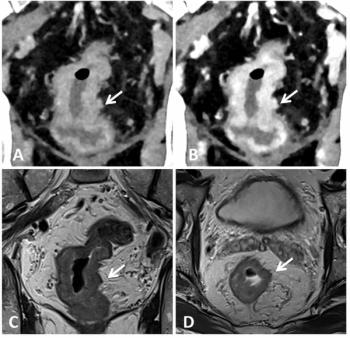
Iron oxide contrast highlights vulnerable plaque
Iron oxide contrast agents could one day help identify vulnerable plaque in atherosclerosis patients, leading to therapies that could prevent heart attacks and strokes, according to a presenter at the ECR.
Iron oxide contrast agents could one day help identify vulnerable plaque in atherosclerosis patients, leading to therapies that could prevent heart attacks and strokes, according to a presenter at the ECR.
Dr. Jonathan H. Gillard, Honorary Consultant Neuroradiologist at Cambridge University Hospitals in the U.K., described research using MR imaging and iron oxide particles to identify macrophages that make the vulnerable plaque that can thrombose carotid and coronary arteries.
The concept is far from being a standard of care, Gilliard told ECR Radio. But on an experimental basis, the hospital has found that the techniques can be used to target drug treatments and to monitor therapy.
Further developments may allow them to be used in a screening setting, he said.
Gilliard traced the development of vascular therapy over the past 15 years, when most analysis was done with angiography and therapy was based on observed obstructions of the lumen. More recent findings that fibrous plaques that may not obstruct the lumen can rupture and thrombose the carotid or coronary arteries have led to additional research on imaging of the vulnerable plaque.
One line of inquiry has involved the use of injected compounds based on ultrasmall iron oxide particles. Research has found that these particles can merge with the macrophages that are contained within the vulnerable plaque and show up as black voids on MR scans, Gilliard said.
"Macrophages take up the injected iron particles and accumulate within the plaque," Gilliard said. "If you lose MRI signals, that shows there are macrophages present. If you have macrophages, you have a much higher risk of plaque."
Using the strategy, the researchers found that individuals who have a blockage on one side of the neck but are otherwise asymptomatic are at high risk for having a blockage on the other side as well.
Iron oxide compounds may have value in imaging other types of inflammation, including multiple sclerosis, some of the dementias, and rheumatoid disease, Gilliard said.
Newsletter
Stay at the forefront of radiology with the Diagnostic Imaging newsletter, delivering the latest news, clinical insights, and imaging advancements for today’s radiologists.



























